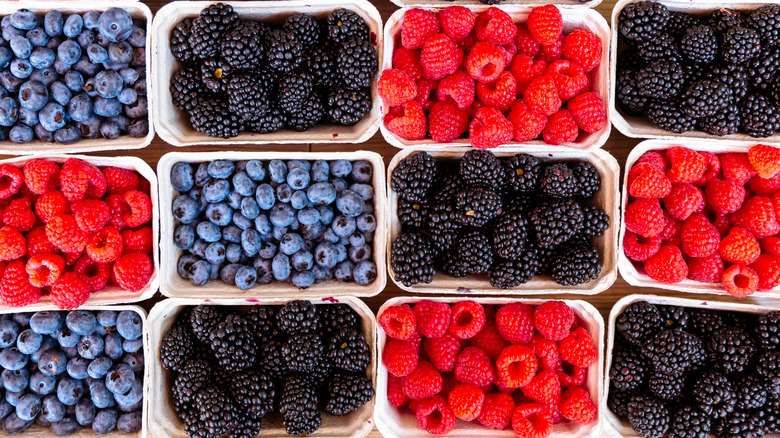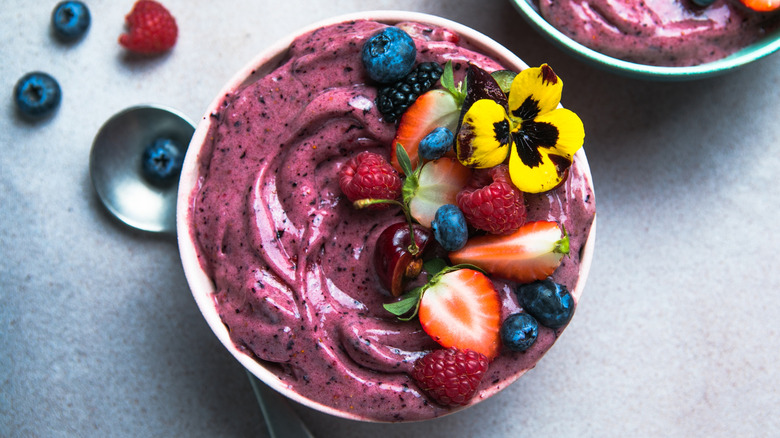Can Fruit Help Combat The Effects Of Microplastics?
Microplastics can be found in everything from the bottled water we drink to the Himalayan pink salt we season our food with. It seems like every day we learn about a new food or cosmetic product they are hiding in — like the microplastics in tea bags – but there is hope. A 2024 study published in the Journal of Pharmaceutical Analysis suggests that fruit can help combat the effects microplastics have on our bodies.
You may have been told to eat a rainbow of foods, and as it turns out, specific colors of the rainbow can help fight off microplastics. The molecules that give certain fruits and vegetables deep purple, blue, and red hues are called anthocyanins, which are a type of antioxidant-rich flavonoid with anti-inflammatory properties. While the extent to which microplastics can damage our bodies is still unknown, researchers have found that microplastics can cause inflammation and are particularly known to impact the reproductive system.
When microplastics enter the body, they can cause what is called oxidative stress. According to the National Cancer Institute, oxidative stress can happen "when there are too many unstable molecules called free radicals in the body and not enough antioxidants to get rid of them." This condition can damage cells and tissues. But by adding more antioxidants, like anthocyanins, into your diet, you can restore that balance, neutralize free radicals, and even help repair some damage that was already done.
Fruits and vegetables that help fight microplastics
It is easy to begin reaping the benefits of anthocyanins just by consuming 50 milligrams of the compound a day, which you can get from about a cup of blueberries. If you want to add more anthocyanins into your diet, look for purple, red, blue, and black produce.
Fruits that contain high amounts of anthocyanins include most berries like blueberries, blackberries, raspberries, and strawberries, as well as many other fruits like red grapes, cherries, plums, currants, cranberries, açaí, and pomegranates. As for veggies, starches, and legumes, you'll find the antioxidant in red cabbage, eggplant, purple corn, purple sweet potatoes, red radishes, black carrots, black beans, kidney beans, and black rice. You can even sip your anthocyanins with teas made from edible flowers like red roses, hibiscus, and lavender. So the next time you treat yourself to a beautiful ube dessert or a refreshing açaí bowl, you can feel even better knowing you are helping to defend your body from microplastics.

